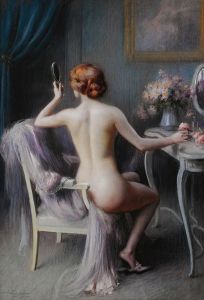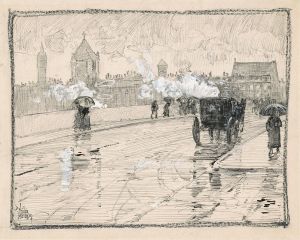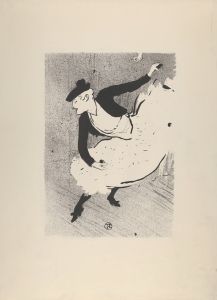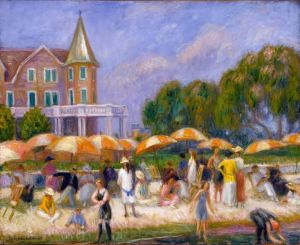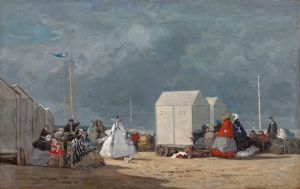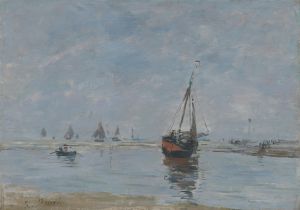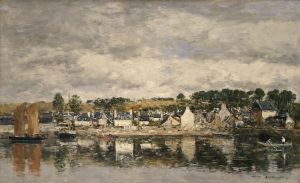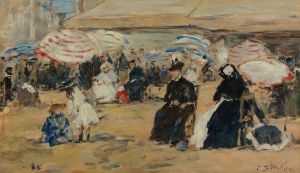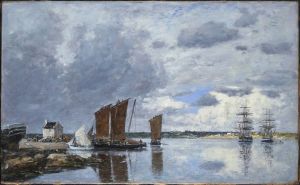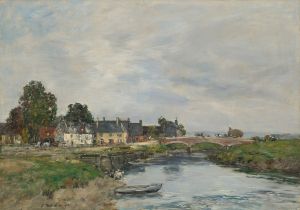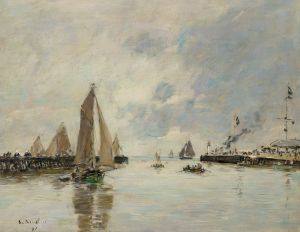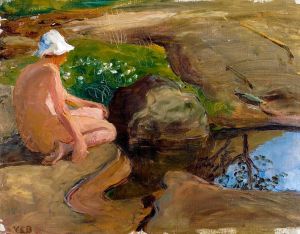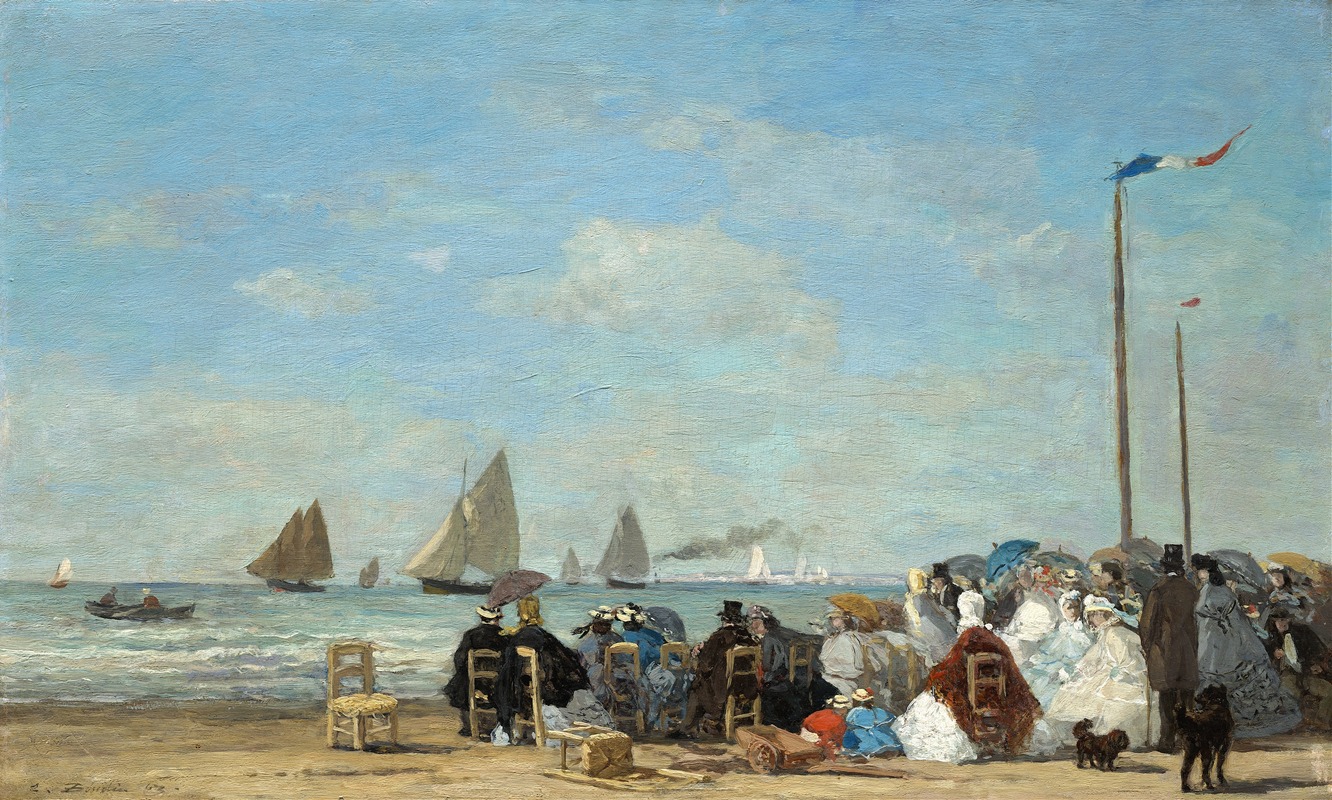
Beach Scene at Trouville
A hand-painted replica of Eugène Boudin’s masterpiece Beach Scene at Trouville, meticulously crafted by professional artists to capture the true essence of the original. Each piece is created with museum-quality canvas and rare mineral pigments, carefully painted by experienced artists with delicate brushstrokes and rich, layered colors to perfectly recreate the texture of the original artwork. Unlike machine-printed reproductions, this hand-painted version brings the painting to life, infused with the artist’s emotions and skill in every stroke. Whether for personal collection or home decoration, it instantly elevates the artistic atmosphere of any space.
"Beach Scene at Trouville" is a painting by the French artist Eugène Boudin, who is widely recognized as one of the pioneers of plein air painting. Boudin was born on July 12, 1824, in Honfleur, France, and he played a significant role in the development of Impressionism. His work is characterized by its focus on capturing the effects of light and atmosphere, often depicting coastal scenes and the leisure activities of the bourgeoisie.
The painting "Beach Scene at Trouville" exemplifies Boudin's fascination with the seaside and his ability to capture the transient effects of light and weather. Trouville-sur-Mer, located in the Normandy region of France, was a popular seaside resort during the 19th century. It attracted many visitors, including artists, writers, and the Parisian elite, who were drawn to its picturesque beaches and vibrant social scene. Boudin frequently visited Trouville, and it became one of his favorite subjects.
In "Beach Scene at Trouville," Boudin captures a typical day at the beach, with elegantly dressed figures strolling along the shore or sitting under parasols. The painting is notable for its loose brushwork and the artist's skillful use of color to convey the shimmering effects of sunlight on the sand and sea. Boudin's ability to depict the changing skies and the play of light on water was highly influential, and it prefigured the techniques later employed by the Impressionists.
Boudin's work was admired by many of his contemporaries, including Claude Monet, who once referred to him as his "master." Monet and other Impressionists were inspired by Boudin's dedication to painting en plein air and his focus on capturing the fleeting moments of everyday life. Boudin's influence is evident in the Impressionists' emphasis on light and atmosphere, as well as their preference for painting outdoors.
"Beach Scene at Trouville" is a testament to Boudin's keen observational skills and his ability to translate the ephemeral qualities of nature onto canvas. The painting reflects the leisurely lifestyle of the 19th-century bourgeoisie and offers a glimpse into the social dynamics of the time. Boudin's work is celebrated for its atmospheric qualities and its contribution to the evolution of modern art.
Today, Eugène Boudin is regarded as a key figure in the transition from Realism to Impressionism. His paintings are held in high esteem and can be found in major museums and collections around the world. "Beach Scene at Trouville" remains an important example of his oeuvre, showcasing his mastery of light and his enduring influence on the art world.





